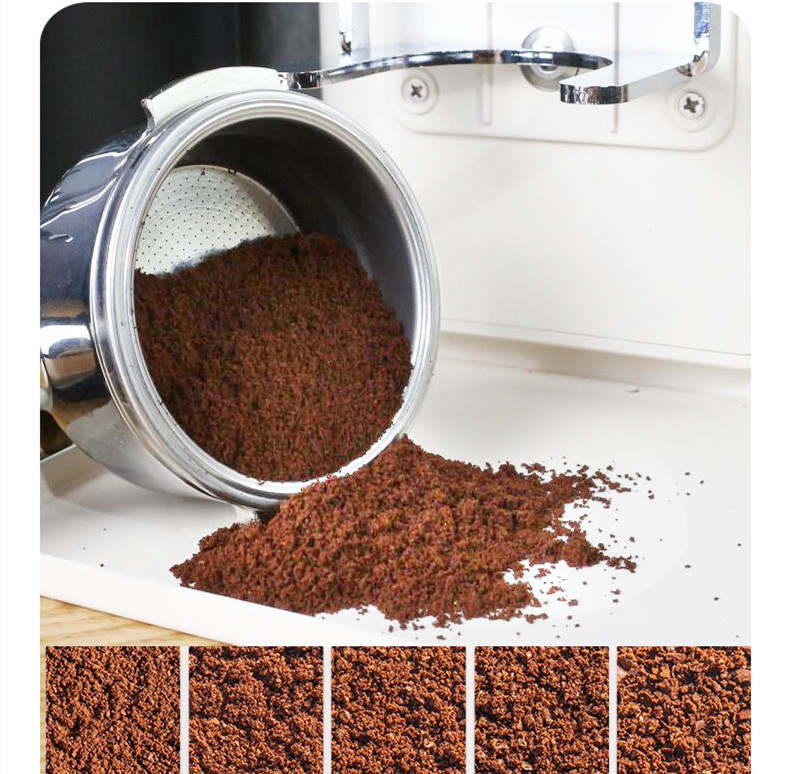Elevating Coffee’s Value Through Strategic Grinding Practices
The journey from raw coffee beans to a premium cup hinges on precision at every stage, with grinding serving as a pivotal yet often underestimated factor. By refining grinding techniques, coffee producers and roasters can unlock hidden potential in their beans, transforming ordinary offerings into high-value products that command premium prices and consumer loyalty. This approach goes beyond mere particle size adjustment—it involves tailoring grind quality to enhance flavor, sustainability, and exclusivity.
Precision Grinding for Unmatched Flavor Clarity
Flavor is the cornerstone of coffee’s perceived value, and grinding plays a decisive role in extracting nuanced profiles. Achieving consistency in grind size ensures even extraction, preventing over-extraction (which causes bitterness) or under-extraction (which leaves flavors flat).
Unlocking Micro-Flavor Layers
Fine-tuning grind settings to match specific brewing methods allows baristas and home brewers to highlight distinct flavor notes. For instance, a slightly coarser grind for pour-over coffee emphasizes floral and citrus notes, while a finer grind for espresso intensifies chocolate and caramel undertones. By educating consumers on how grind adjustments affect taste, brands can position their coffee as a customizable experience rather than a one-size-fits-all product.
Reducing Waste Through Optimal Extraction
Inconsistent grinds lead to uneven extraction, forcing consumers to discard under- or over-brewed batches. Precision grinding minimizes waste by ensuring every gram of coffee delivers maximum flavor. This efficiency appeals to eco-conscious buyers and cafes looking to reduce operational costs, indirectly boosting the product’s perceived value through sustainability.
Enhancing Freshness Retention
Freshly ground coffee loses aroma and complexity rapidly when exposed to air. Brands that grind beans on-demand or in small batches can market their product as “peak freshness guaranteed.” Packaging innovations, such as vacuum-sealed grinds or nitrogen-flushed bags, further preserve flavor, justifying a higher price point for consumers seeking restaurant-quality coffee at home.
Sustainability-Driven Grinding Practices
As environmental awareness grows, consumers increasingly associate sustainability with quality. Grinding processes that prioritize eco-friendly methods can elevate a coffee’s value by appealing to ethical buyers.
Energy-Efficient Grinding Technologies
Traditional grinders consume significant energy, but modern models with variable-speed motors or solar-powered options reduce carbon footprints. Highlighting these innovations in marketing materials positions the brand as a leader in green practices. For example, a roaster might emphasize that their grinding facility runs on renewable energy, attracting environmentally aware customers.
Zero-Waste Grinding Systems
Coffee grounds, a byproduct of grinding, can be repurposed into compost, biofuels, or skincare products. Implementing circular economy models—such as partnering with local farms to distribute used grounds—creates a narrative of responsibility. Brands can label their products as “zero-waste certified” or share stories of how repurposed grounds support community gardens, adding emotional value.
Ethical Sourcing and Local Processing
Grinding beans locally, rather than shipping pre-ground coffee globally, reduces transportation emissions and supports regional economies. Brands that partner with smallholder farmers and process beans in-house can emphasize their commitment to fairness and freshness. Certifications like Fair Trade or Rainforest Alliance, combined with transparent storytelling, reinforce the product’s ethical premium.
Customization and Personalization Through Grinding
In an era of hyper-personalization, offering tailored grinding options transforms coffee from a commodity into a bespoke experience. Consumers crave products that reflect their unique preferences, and grinding is the key to delivering this.
Grind-on-Demand Services
Cafes and roasters can introduce “grind-to-order” stations where customers select their preferred grind size, brewing method, and even flavor intensity. This interactive approach fosters engagement and positions the brand as innovative. For example, a customer might choose a “bold espresso grind” or a “light filter grind,” creating a sense of ownership over their coffee.
Subscription Models with Grind Variety
Subscription services that rotate grind profiles based on seasonal beans or consumer feedback add value through novelty. A monthly box might include a coarse grind for cold brew, a medium grind for drip coffee, and a fine grind for espresso, encouraging subscribers to experiment. Educational content, such as brewing guides or flavor pairing suggestions, deepens the connection.
Collaborations with Artisans
Partnering with chefs, mixologists, or chocolatiers to create signature grind blends adds exclusivity. A limited-edition grind designed for pairing with dark chocolate or craft beer can attract food enthusiasts willing to pay a premium for a unique experience. Limited availability and storytelling around the collaboration’s inspiration enhance perceived rarity.
Enhancing Shelf Appeal Through Grind Aesthetics
Visual appeal influences purchasing decisions, and the presentation of ground coffee can elevate its perceived value. Thoughtful packaging and grind consistency contribute to a premium image.
Uniformity as a Quality Indicator
Consumers associate consistent grind particles with professionalism and care. Brands that invest in high-precision grinders can highlight this uniformity on packaging, using phrases like “laboratory-grade grind” or “micro-adjusted for perfection.” This technical language appeals to discerning buyers who equate precision with quality.
Packaging Innovations
Reusable or biodegradable containers with airtight seals preserve freshness while reducing plastic waste. Transparent windows that showcase the grind’s texture add authenticity, allowing customers to see the product’s quality before purchase. Brands might also use minimalist designs or artisanal labels to evoke a handcrafted feel.
Storytelling Through Grind Origins
Sharing the story behind the grind—such as the altitude of the beans, the roasting technique, or the farmer’s expertise—creates emotional value. A label that reads “Hand-ground in small batches from single-origin Ethiopian beans” transports the consumer to the source, justifying a higher price through authenticity and craftsmanship.
By prioritizing precision, sustainability, customization, and aesthetics, grinding becomes a powerful tool for elevating coffee’s value. These strategies not only enhance flavor and environmental credentials but also foster deeper connections with consumers, transforming ordinary coffee into a premium, memorable experience.


